Ductile Iron Pipe: Definition, Uses, Standards & Benefits (2025 Guide)
Ductile iron pipe is used worldwide in water and wastewater systems. Ductile iron pipe is such a high-pressure and corrosion resistant pipe which is made of pig iron and additives. Pig iron is mainly included by ore base and carbon to create that durable pipeline, remaining over decades with low maintenance requirements to decrease costs.
DIP refers to ductile iron pipe, a high-pressure resistance, used for water transmission and sewage systems where pressurized water flows. Ductile iron pipe (DIP) has evolved the history of piping systems since 1955. Moreover, DI Pipe History goes back to the days when cast pipe got its last shots to stay on top, DIP changed the game by its superior properties.
DIP not only shows efficient performance in water systems, but also ease the infrastructure of gas distribution, bridges, highways and building construction. Let’s dive deeply into this piping journey!
What Exactly Ductile Iron Pipe Made Of?
Ductile iron, the main material used for DIP, doesn’t come from iron or steel. Iron crude is made from smelting the ore base and carbon in a blast furnace. This combination is called pig iron.
After it gets cooled, to enhance the chemical properties and stability, additives like silicon, manganese, and sulfur shape the Nodular graphite structure of carbon. Here is a table for each component to understand why they’re used in DI:
| Element | Reason for Use | Content (% by Weight) |
|---|---|---|
| Iron (Fe) | Primary matrix for strength and durability. | Balance (~93–95%) |
| Carbon (C) | Forms graphite nodules for hardness and ductility. | 3.0–3.7% |
| Silicon (Si) | Boosts strength and corrosion resistance. | 1.2–2.3% |
| Magnesium (Mg) | Creates nodular graphite for enhanced ductility. | 0.03–0.04% |
| Manganese (Mn) | Increases tensile strength and stabilizes microstructure. | 0.1–0.2% |
| Phosphorus (P) | Improves casting fluidity, kept low to avoid brittleness. | 0.005–0.04% |
| Sulfur (S) | To ensure nodular graphite and prevent brittleness. | 0.005–0.02% |
How Is Ductile Iron Pipe Made?
At the beginning of DI production, recycled iron goes through a melting process in a blast furnace at a high temperature (mostly 1,500°C). Additives like magnesium build the nodular graphite. Explore How Is Ductile Iron Pipe Made for more info.
To get the shape of a pipe, the molten mixture is poured into a centrifugal casting machine. Once it cooled to prove mechanical properties, it heated to 950°C, and then the internal side of the pipes was covered by cement mortar to create corrosion resistance. Now, let’s get to know more about these words:
Nodular Graphite Structure and Metallurgy
What does nodular graphite mean? Graphite in ductile iron structure is shaped as teeny-tiny balls or sphere-like shapes to create ductility and pressure tolerance. Extra elements which may cause nodules are included:
- Magnesium
- Cerium
Also, there are matrixes that surround these nodules, representing mechanical properties based on the heat treatment of each:
- Ferrite
- Pearlite
- Austenite
- Bainite
Centrifugal Casting Process
The main process of DIP production is centered by centrifugal casting. After the iron gets mixed and heated, it goes through a rotating mold to get shaped (mostly symmetrical or cylindrical) evenly by water spray’s cooling systems. Post-casting refers to heating for ductility improvement.
The process is finished by testing, covering the inner side for corrosion resistance, and final controls to achieve the highest standards.
Environmental Sustainability and Recycled Materials
Ductile iron pipe shows its environmental sustainability by containing at least 90% recyclable materials and long lifespan which itself matters in future recycling processes.
Also, the production of ductile iron pipe generates less greenhouse gases than other pipes’ manufacturing processes. The special design used in DIP helps energy saving for pumping and smooth transmissions.
Unlike other alternatives which can spread harmful chemicals in the air through the manufacturing process, DIP releases no chemical particles.
All these aspects make ductile iron pipes top choice for eco-friendly infrastructure projects.
Technical Specifications of Ductile Iron Pipe
In this section, we’ll explore technical aspects of DIP such as its proper sizes, classifications, electrical conductivities, and magnet characteristics.
DI Pipe Sizes and Dimensions
Ductile iron pipe has different standard sizes in some areas, for instance in US size range from 3 to 64 inches based on AWWA C151 standard, while this size differs in European countries with nominal diameter (DN) between 40 to 2000 based on ISO 2531, EN 545/598.
This variety goes into internal diameter for improving wall thickness and the external diameter remains the same to ease the joint process. These divisions help pipes to fit all applications perfectly, for example, for large sewage lines DN between 1400-2000 is mostly used. Learn more in DI Pipe Sizes and Dimensions context.
Ductile Iron Pipe Thickness Class vs. Pressure Class
Thickness class of DIP (Class 50–56, AWWA C151, refers to American National Standard for Ductile-Iron Pipe, Centrifugally Cast, for Water) talks of the minimum wall thickness tolerance under external loads, while pressure class is for the maximum internal pressure tolerance.
To be clear, consider a class 50 pipe with a thicker wall than a 350 PSI pipe which shows a good capacity of pressure resistance on the internal side. Remember, for the best result, choose the right DIP Thickness Class and Pressure Class to guarantee a century of piping life!
| Size (in.) | Outside Diameter (in.) | 150 | 200 | 250 | 300 | 350 |
|---|---|---|---|---|---|---|
| 3 | 3.96 | — | — | — | — | 0.25* |
| 4 | 4.80 | — | — | — | — | 0.25* |
| 12 | 13.20 | — | — | — | — | 0.28 |
| 14 | 15.30 | — | — | 0.28 | 0.30 | 0.31 |
| 16 | 17.40 | — | — | 0.30 | 0.32 | 0.34 |
| 18 | 19.50 | — | — | 0.31 | 0.34 | 0.36 |
| 20 | 21.60 | — | — | 0.32 | 0.36 | 0.38 |
| 24 | 25.80 | — | 0.33 | 0.37 | 0.40 | 0.43 |
| 30 | 32.00 | 0.34 | 0.38 | 0.43 | 0.45 | 0.49 |
| 36 | 38.30 | 0.37 | 0.41 | 0.47 | 0.50 | 0.54 |
| 42 | 44.50 | 0.40 | 0.45 | 0.51 | 0.55 | 0.60 |
| 48 | 50.80 | 0.44 | 0.50 | 0.56 | 0.61 | 0.67 |
| 54 | 57.56 | 0.51 | 0.58 | 0.65 | 0.72 | 0.79 |
| 60 | 61.61 | 0.56 | 0.64 | 0.72 | 0.80 | 0.87 |
| 64 | 65.67 | 0.56 | 0.64 | 0.72 | 0.80 | 0.87 |
What is the Pressure of DI Pipe?
As mentioned in the last part, standards like AWWA C151 and ISO 2531/EN 545 indicate the DIP pressure rates. One provides us with class 150-350 PSI, while the other one handles 25–100 bars, ~363–1450 PSI.
Let’s define it by an example, as noted in What Is The Pressure Of DI Pipe, a Class 125 ductile iron pipe shows a maximum working pressure of 1250 PSI and it’s used in water transmission and wastewater systems.
Ductile Iron Pipe Electrical Conductivity
As a ferrous-based material, ductile iron supports such electrical conductivity property, though due to the existence of additives, it may show less conductivity than pure metal. This characteristic is practical for cathodic protection and electrical thawing in cold temperatures.
These bonding systems make the joint process flawless and avoid galvanic corrosion in some metal connections like copper. After all, check out Ductile Iron Pipe Electrical Conductivity for various applications of this aspect.
Is Ductile Iron Pipe Magnetic?
Yes, Due to ductile iron pipe’s rich content of iron, it is defined as a ferromagnetic material. It can ease the mapping usage in buried systems by using magnet locators. To prevent any interference, engineers should consider high-electromagnetic environments.
Not only magnetism does not make any dilemma, but also is essential for projects where detection matters, check Is Ductile Iron Pipe Magnetic for more on this subject.
Standards and Certification of Ductile Iron Pipes
Ductile iron pipe follows global standards for consistency of quality over the period of time.
- The American Water Works Association (AWWA) provides a wide range of standards based on ductile iron’s characteristics.
- In international space, ISO 2531 plays a critical role in fitting portable water and wastewater piping.
- EN 545 for portable water and EN 598 for sewer systems are mainly used In Europe to measure properties like corrosion resistance.
- AS/NZS 2280, shapes the standards in Australia/New Zealand to make sure of fitting and pressure resistance properties.
| Standard | Title |
|---|---|
| ANSI/AWWA C104/A21.4 | American National Standard for Cement-Mortar Lining for Ductile-Iron Pipe and Fittings for Water |
| ANSI/AWWA C105/A21.5 | American National Standard for Polyethylene Encasement for Ductile-Iron Pipe Systems |
| ANSI/AWWA C110/A21.10 | American National Standard for Ductile-Iron and Gray-Iron Fittings, 3-inch through 48-inch, for Water |
| ANSI/AWWA C111/A21.11 | American National Standard for Rubber-Gasket Joints for Ductile-Iron Pressure Pipe and Fittings |
| ANSI/AWWA C115/A21.15 | American National Standard for Flanged Ductile-Iron Pipe with Ductile-Iron or Gray-Iron Threaded Flanges |
| ANSI/AWWA C150/A21.50 | American National Standard for the Thickness Design of Ductile-Iron Pipe |
| ANSI/AWWA C151/A21.51 | American National Standard for Ductile-Iron Pipe, Centrifugally Cast, for Water |
| ANSI/AWWA C153/A21.53 | American National Standard for Ductile-Iron Compact Fittings for Water Service |
| ANSI/AWWA C600 | AWWA Standard for Installation of Ductile-Iron Water Mains and Their Appurtenances |
| ASTM A674 | Standard Practice for Polyethylene Encasement for Ductile Iron Pipe for Water or Other Liquids |
| ASTM A716 | Standard Specification for Ductile Iron Culvert Pipe |
| ASTM A746 | Standard Specification for Ductile Iron Gravity Sewer Pipe |
Ductile Iron Pipe and Fittings Standards
Based on standards above, AWWA C110 is used in water systems, coatings, and dimensions in fittings aspects, while ISO 7186 goes for rating the pressure of pressure pipelines for fittings.
For fitting the water supply and drainage AS/NZS 2280 is mainly used, and for portable water systems which include zinc coating, European standards will ease the process. Follow Ductile Iron Pipe and Fittings Standards for a better understanding of each of them.
Quality Control in Manufacturing
According to ScienceDirect, to achieve various standards, ductile iron pipe goes through quality control tests, including:
- Elasticity Strength Tests (minimum 60,000 PSI, AWWA C151)
- Hydrostatic Pressure Tests (up to 500 PSI for Class 52 pipes)
- Coating process Checks (e.g., zinc at 200 g/m², EN 545)
- Non-destructive testing to recognize defections (ultrasonic inspection)
- material safety (NSF/ANSI 61 certification)
Joint Systems and Connectivity of DIP
There are multiple joint systems for ductile iron pipe to fulfill every type of application.
- Tyton® Joints: This type includes a push-on design of connections and rubber seals for water mains due to their leak-proof nature.
- Mechanical Joints: Gland bolts come into easy connections and fittings like valves.
- Flanged Joints: These are used in factories that have above-ground and high-pressure pumping systems that follow AWWA’s standards.
- Restrained Joints: Contains TR Flex®, which can be perfect for geologically unstable places, learn more on What is Restrained Joint Ductile Iron Pipe
- Ball-And-Socket Joints: This is made for underwater purposes, like river crossing.
Ductile Iron Pipe Joints and Fittings
DIP joints and fitting go through standards like ANSI/AWWA. In fittings processes, AWWA C153/A21.53 shapes the way of water and sewage systems’ designing.
Each type of joint provides a unique application, for instance, flanged fitting (C110) is for high-pressure systems, while restrained fittings increase consistency in dynamic situations.
Otherwise, coating (like cement mortar) is used for the prevention of fittings’ corrosion.
Possibility of Connecting Ductile Iron Pipe to Other Pipes
These types of joints and fitting are not only related to ductile iron pipes, but also, they can connect DIP to other pipes like PVS, steel, or HDPE by transition fittings or adaptors.
Flanged joints are used for steel or stainless-steel pipes, while for PVC leak-proofing joints are required. Overall, choosing the best method to avoid corrosion and decrease the cost and maintenance is critical.
Internal Linings and External Coatings of Ductile Iron Pipe
To increase the water quality through corrosive-resistant internal linings. For instance, in portable water systems, cement-mortar is a top choice due to pH adjusting.
Epoxy linings are used in harsh environments like wastewater systems, while Polyurethane linings are more flexible and resistant to corrosion and fit sewage systems as well.
As noted in AWWA Standard, Each of these linings above follows certain standards to meet the demands.
Ductile Iron Pipe Epoxy Coating
In case of ductile iron pipe, epoxy coating blocks corrosion in aggressive water or sewage systems by an internal lining. Moreover, it may create such a uniform surface that eases the flow and avoids growth of biofilm.
Epoxy coating is applied through brush or spray and boosts the pipe’s lifespan by around 100 years with less maintenance costs. Keep reading on Ductile Iron Pipe Epoxy Coating.
Zinc-Rich, Bitumen, Polyethylene Encasement
Now, we’ve got to the outer side of the pipe, let’s break into these materials and how they affect resistance:
- Bitumen is a traditional way of coating, mostly seen in older infrastructures for waterproofing.
- Polyethylene encasement, based on ANSI/AWWA C105/A21.5 protects pipes in aggressive soils, like acidic environments.
- Zinc-rich coating also includes corroding itself before pipes, which makes it an appropriate choice for less corrosive soils.
Coating & Lining of DI Pipes
External coating like bitumen, Zinc-rich, and Polyethylene encasement are applied for outer aggression like acidic soils, while internal linings like cement-mortar or epoxy avoid biofilm growth or inner corrosion.
At the end, coating and lining whether internal or external are highly crucial for pipe’s lifespan and safety. Check out Coating & Lining of DI Pipes for more tips.
How does the ductile iron pipe Perform in mechanical and structural conditions?
Ductile iron pipe handles intensive pressures of 60,000 PSI compared to those old gray cast iron pipes. According to ScienceDirect, the nodular graphite structure makes DIP perfect for traffic or below-ground and construction stresses projects.
This toughness is combined with flexibility to reduce fixing costs and corrosion in aggressive conditions or urban environments.
Durability in High-Pressure and Seismic Zones
Ductile iron pipe due to its flexible joint systems like restrained joints, can absorb seismic shocks and shines in high-pressure and seismic zones. Internal linings and external coatings made DIP thicken for resistance in aggressive soils, surge and external loads.
Can Ductile Iron Pipe Crack?
Yes, although ductile iron pipe resists high pressures, it can crack in some ways such as inappropriate installation, too heavy external loads, or some shocks from temperature changings.
For instance, if the coating fails, the pipe will be damaged by corrosion over the years. Some manufacturing faults may rarely happen, though under standards for each process will achieve reliable DIP for water systems, interesting info in Can Ductile Iron Pipe Crack?
Earthquake Resistant Ductile Iron Pipe
Restrained joints like TR Flex® or HP LOK® play a practical role in earthquake resistance of ductile iron pipe through their defection controls or flexibility against breaking. Also, Polyethylene encasement can avoid corrosion in seismic zones. Keep reading on Earthquake Resistant Ductile Iron Pipe.
How Long Does Ductile Iron Pipe Last?
Due to high-quality coatings and resistant base materials, ductile iron pipe lasts around a century (100-110 years). Case studies, for instance 1922-installed pipes still work and need minimum maintenance.
Environmental conditions like soil pH or sharp rocks will affect the pipe’s lifespan a bit, but protective coating and thick linings will aid us in infrastructural decisions. Learn more on How Long Does Ductile Iron Pipe Last.
What are the installation methods for a ductile iron pipe?
There are two central methods for installation of ductile iron pipe, let’s break them into functional information:
Trenchless methods such as horizontal directional drilling (HDD) which is used in urban sides or sensitive sites with high traffic via decreasing surface disruption, while in pipe bursting old pipes are replaced with DIP to minimize costs.
Open-cut trenching begins with digging trenches, putting pipes there and back filling them with proper materials to prevent cracks. This method is perfectly used in new pipeline projects like rural or remote areas.
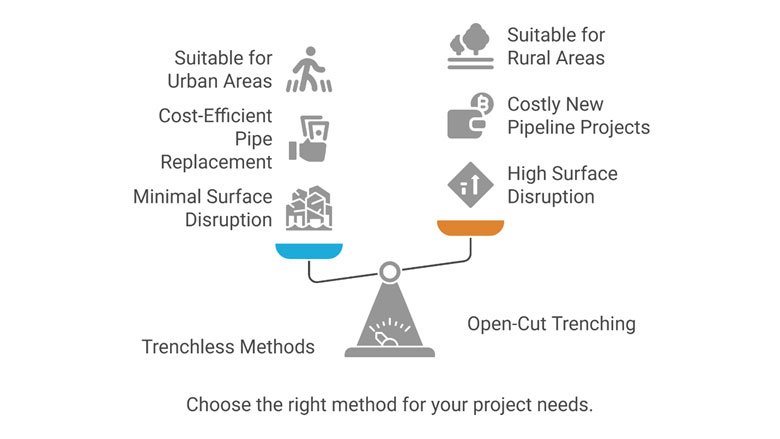
Different Usage: Urban, Underwater, Steep Terrain
Ductile iron pipes are able to adapt themselves to various environments through their flexible aspects. Trenchless methods ease the installation in crowded areas like cities or tight spaces via HDD or micro tunneling methods.
Moreover, this wide range of joints causes DIP to shine in other situations. For example, in underwater installations like rivers or lakes, ball-and-socket joints are used for uneven ground to curve pipes without cracking.
Last, steep terrains make issues as pulling pipes down due to gravity which cause cracks or leaks, restrained joints lock pipes in those places with no movement to prevent those dilemmas.
Step-by-Step Installation of Ductile Iron Pipe
Ductile iron pipe is a vivid process via following AWWA C600 to reach such a flawless piping for water systems.
- Trench Preparation: It starts with digging trenches with smooth bases and no hard rocks.
- Pipe Inspection: Check pipes for any flow in coating or linings to prevent damages in the future.
- Joint systems: Apply a lubricant to the trenches, then push the pipes to get fixed there.
- Lowering & Alignment: To push pipes low, use nylon slings and design slopes in the way for best flows.
- Fittings: To connect pipes, use elbows, tees, or valves to make pipe networks leak-proof.
- Backfilling: To avoid any movement, fill the trenches with soft soil and double-check coatings for corrosion resistance.
- Pressure Testing: At the end, flow high-pressure water to see if there are any leaks.
After all, this process like other installations requires multiple standards which you learn more about on Ductile Iron Pipe Installation.
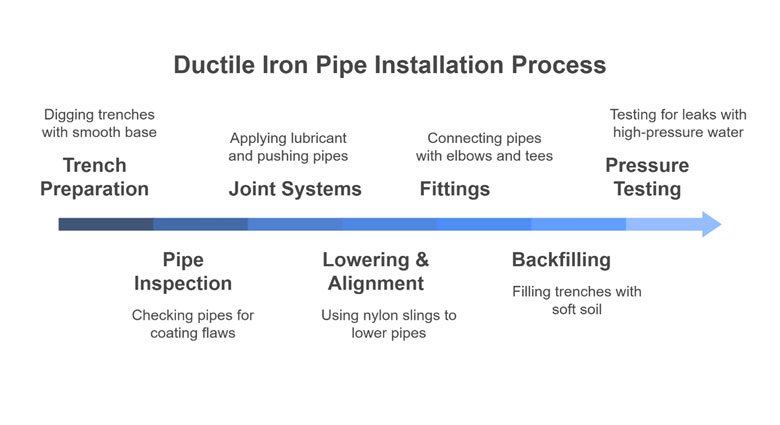
How to Install Flange on Ductile Iron Pipe
In high-pressure systems, safe connections of ductile iron pipes matter, standards such as AWWA C115/A21.15 ensure this consistent way of installation:
- Cut & Prepare the Pipe: Cut the pipes in square shapes and clean them for a smooth connection.
- Attach the Flange: There are three flanges, threaded flanges must be screwed onto pipes, welded ones are needed to weld them and for push-on flanges bolts and gaskets are used.
- Align & Bolt: A Crisscross pattern of tightening will prevent warping.
- Test & Inspect: Check them for right alignment and use air or water tests for no leaks in the future.
Flanges are specifically needed in piping systems due to their flawless connecting, keep reading on How to install flange on ductile iron pipe for more detailed information.
How to Weld Ductile Iron Pipe
Ductile iron pipe has a high content of carbon and makes welding a bit risky, then what manufacturers do for it?! Preheating the pipes to 300–400°F and using nickel-based fillers or electrodes with low hydrogen will be useful in prevention of cracks.
Also, slow-cooling and cleaning the welding area is going to decrease the stress of defections. Follow How to Weld Ductile Iron Pipe article for better understanding!
How to Drill a Hole in Ductile Iron Pipe
To drill a hole in the ductile iron pipe, follow these steps. Remember about safety and use gloves and glasses:
- Mark the spot with a marker to show where you want to drill
- Carbide-tipped or diamond-coated drills are the top choices for DIP drilling, then set them at low speed.
- Drill carefully and use protection. Coolant like water or oil will ease the process.
As mentioned in AWWA C110, install a clamp for a leak-proof connection, check out How to Drill a Hole in Ductile Iron Pipe for more drilling content!
Ductile Iron Pipe Threading
For creating safe and practical connections in flanges and screwed fittings, a threading machine will cut internal and external threads after threading and clean the oil that is used for controlling the heat and smoothness of threads. Learn more about Ductile Iron Pipe Threading solutions.
Although threads are less common than push-on joints, they provide a leak-free result for specific applications.
Applications of Ductile Iron Pipes
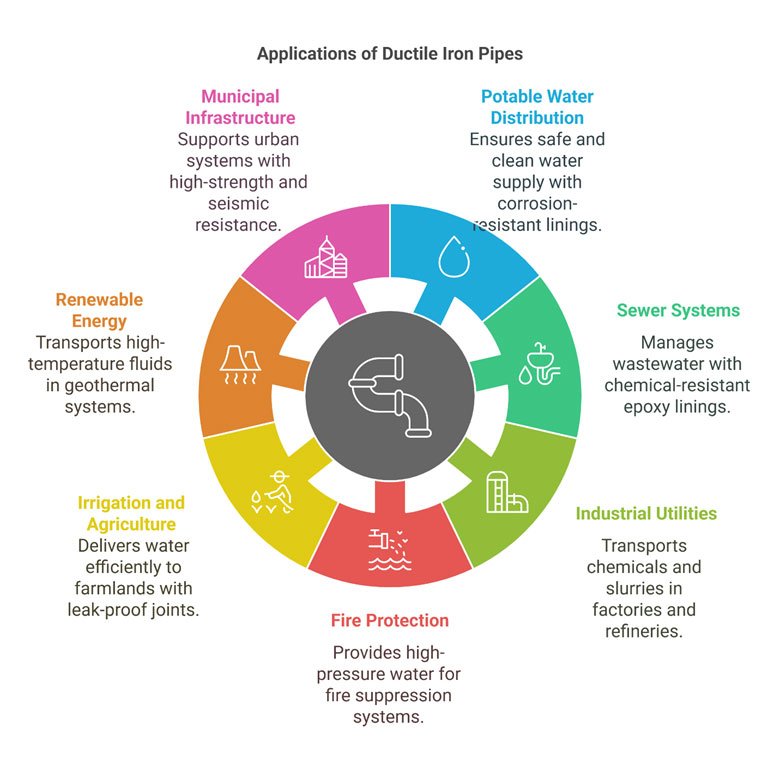
Ductile iron pipe is widely used for various applications due to its unique characteristics such as corrosive resistance, flexibility, and long lifespan:
1. Potable Water Distribution
Due to smoothness of internal linings and safety, ductile iron pipe is a top choice for portable water distribution. Cement-mortar lining avoids corrosion and biofilm growth, while restrained joints aim high-pressure flows and leak-proofing.
2. DI Pipe for Sewer Systems
Ductile iron pipe manages wastewater chemical degradation through its magnificent epoxy linings, while the pressure resistance of DIP would tolerate soil loads and seismic risks.
Overall, with a lifespan around a century, ductile iron pipe will decrease maintenance costs. Look for more information on DI Pipe for Sewer Systems.
3. Industrial Utilities
Ductile iron pipe is utilized for several industrial applications as:
- Water Transmission Systems
- Transporting Chemicals or Slurries in Factories
- Refineries
- Power Plants
- Moreover, effective linings and coatings perform as stable and uniform conditions for slurries, while using flanged joints causes connections with high-security.
4. Fire Protection and Hydrants
A ductile iron pipe is crucial for fire protection systems. The strength, high-pressure resistance (60,000 PSI, AWWA C151), and practical joints systems work for water transmissions quickly, while its long-term performance will minimize costs of fire networks.
After all, cement-mortar linings deliver water of high quality and rapidly!
5. Irrigation and Agriculture
Ductile iron pipe naturally works for irrigation and agriculture due to its resistance against corrosion. Push-on joints help transformation without leaks and decrease the labor costs.
Also, due to remaining for a century in farmlands, ductile iron pipe is cost-effective for large-scale irrigation projects.
6. Renewable and Geothermal Energy
Through high-temperature and chemical liquid transmissions, ductile iron pipes play a critical role in renewable and geothermal energy systems. It has such a long lifespan for sustainable infrastructures due to its strength and properties.
Its corrosion-resistant epoxy linings can tolerate hot and aggressive fluids, while flanged joints provide rigid connections in harsh environments.
7. Critical Municipal Infrastructure
In critical municipal infrastructures, pipelines which include high-quality coatings, seismic resistance and long lifespan are game-changers. Reducing the labor and maintenance costs is one another engineers’ considerations.
Ductile iron pipe is a high strength and can manage heavy soil loads in urban systems, while restrained joints will help appear flawlessly over 100 years.
Ductile Iron Pipe vs Other Pipelines
There are multiple choices for replacing DIP. Each may include specific characteristics that DIP includes. Let’s see what these pipes are and how they are different.
Ductile Iron Pipe vs. PVC Pipe
Ductile iron pipe shows its superiorities in compared with PVC by being 13 times better corrosion resistance and 9 times in high-pressure conditions, while it can handle high-temperature and aggressive environments.
Also, due to its metal base and plastic matter of PVC, DIP lasts much more years and can resist cracking under high-pressures, while is cheaper and reduces the maintenance costs. Learn more on Ductile Iron Pipe Vs PVC Pipe for better comparison.
Ductile Iron vs. Cast Iron Pipe
Cast iron pipe was replaced with ductile iron pipe in the 1950s. DIP proves its flexibility without breaking, while cast iron pipe would crack like a dry wood stick.
Otherwise, DIP lasts over 100 years with low maintenance requirements, while 100-year-old cast iron pipes don’t look the same and wouldn’t resist as tough as DIP.
DIP vs. Steel Pipe
Ductile iron pipe includes pish-on installation methods that ease the adjustment than steel pipe with permanent welding systems just as glue!
Moreover, larger internal diameters in DIP will deliver water quicker than steel pipe. Steel pipes are perfect for factories with high-pressure conditions and DIP glows through its long lasting and corrosive-resistance aspects.
DIP vs. HDPE Pipe
In this case DIP is way tougher than HDPE pipe, due to DIP metal base and flexible plastic base of HDPE which couldn’t handle aggressive and high-pressure environments as DIP does.
Although HDPE shines in earthquake-based areas through its easy-bending, its higher pumping costs will make it fail in comparison to DIP with lower total costs and lasting for a century under and above the grounds!
DIP vs. GRP Pipe
Due to its metal base, ductile iron pipes can resist pressures about three times better than GRP. However, GRP’s resin base will shine in aggressive soils, and DIP’s cement-mortar linings will transform water cleanly and safely.
GRP is lighter and perfect for small-scale industrial projects, while DIP lasts over 100 years and is an ideal choice in large water and wastewater systems.
| Property | Ductile Iron Pipe (DIP) | PVC Pipe | HDPE Pipe | Steel Pipe | GRP Pipe |
|---|---|---|---|---|---|
| Material Base | Iron Alloy | Plastic (Polyvinyl Chloride) | Plastic (Polyethylene) | Steel | Glass-Reinforced Plastic |
| Pressure Resistance | Very High (up to 60,000 PSI) | Moderate | Moderate | Very High | Low to Moderate |
| Corrosion Resistance | High (with coating) | High | Very High | Requires coating | High |
| Flexibility | Moderate | High | Very High | Low | Moderate |
| Lifespan | 100+ years | 50–70 years | 50–100 years | 30–70 years | 40–60 years |
| Cost | Moderate | Low | Low to Moderate | High | Moderate |
Ductile Iron Pipe Alternatives
In addition, pipelines such as PVC, GRP, HDPE, or steel and concrete pipes are used in various industrial aims, due to their specific properties.
For instance, PVC and HDPE are lighter than DIP, but can’t stand under high-pressure systems and will crack easily. For better understanding, follow Can We Connect Ductile Iron Pipes to PVC Pipes.
Unlike plastic-based pipes, DIP with high recycled content is a top choice for projects in this new era. Also, GRP would resist harsh chemical conditions but it’s not as tough as DIP.
Overall, DIP lasts over 100 years with low maintenance costs and delivering water or other fluids with no leaks, though each alternative shows a reasonable characteristic. for choosing the best option check Ductile Iron Pipe Alternatives out!
Advantages and Disadvantages of Ductile Iron Pipes
Ductile iron pipe represents itself for various applications through magnificent properties. Due to high strength and pressure-tolerance, it stands out under seismic-prone grounds.
Coatings and linings will provide rapid transmission of different liquids whether regular or aggressive. No matter if it goes under harsh soils or above-ground, it can handle both aggressive and UV conditions.
After all, repairments will require special equipment and corrosion is still possible, but beyond all, DIP will last over a century, while saving thousands in energy, maintenance, or even replacements. Keep reading for more detailed information on Advantages and Disadvantages of Ductile Iron Pipes
Where and When DIP is Preferred?
Where pressure-resistance matters, DIP appears to aid water transportation, fire protection, and sewage systems. Its different ways of joining and installation make it ideal for both city and rural projects where traffic and trench method issues come in.
If you’re looking for a low-budget and less corrosive-resistant pipe like in small factories with chemical fluids, DIP probably shows itself in large-scale and harsh environments better.
Then, it’s ideal for earthquake-based soils and will last for decades and beyond!
Maintenance and Repairment of Ductile Iron Pipe
Ductile iron pipe is made to stand for a century, but maintaining it regularly will help perfect working. There are several reasons to check out how the pipe is working. From inspections, leaks or cracks to technical repairments.
Inspection, Rehabilitation, and Longevity
Inspections go for checking normal lining or coating damage, leaks or internal dirt through following AWWA guidelines. Rehabilitation is referred to epoxy lining or relining to solve corrosion issues without turning up the pipes to reduce costs.
Longevity will be achieved through using polyethylene encasement in aggressive environments. Furthermore, to avoid blockage, pipes should be cleaned regularly, in this way, DIP continues the journey of 100-years without dilemmas.
Ductile Iron Pipe Repair Techniques
Due to its metal base, a ductile iron pipe is as hard as rock, so it requires special tools for maintenance.
The most common issue is cracks, which are repaired with new pipes or clamps that are applied after cleaning. Moreover, acoustic tests for leaks will reduce downtime. Check out Ductile Iron Pipe Repair.
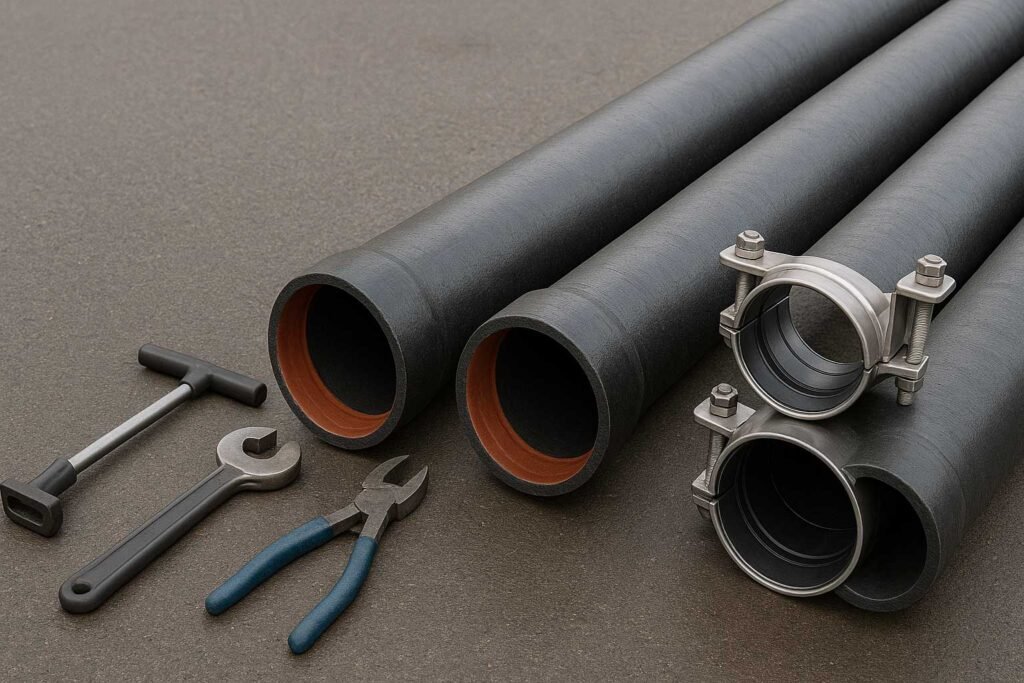
Global Leaders in DIP Manufacturing
Top ductile iron leaders spread in Asia, Europe, and the USA. For instance, Saint-Gobain PAM in France manages the market with high-quality and excellent services, while McWane Ductile in North America contains 98% recycled pipe to persuade the eco-friendly supporters.
Xinxing Ductile Iron Pipes (China) and Electrosteel Castings (India) are two other global leaders of DIP that offer consistent, flexible, and durable choice over the world.
Top Ductile Iron Pipe Suppliers in UAE
In the UAE, leaders of ductile iron suppliers include Yasmin Trading, Dutco Tennant, and Unitech DI Pipes & Fitting MFG.
Yasmin Trading provides their customers with DIP followed by a wide range of standards, while containing installation, fittings and maintenance features. Yasmin Trading is not only available in UAE, but also, is topnotch in Qatar, Iraq, and Syria. Follow Top Ductile Iron Pipe Suppliers in UAE for more details.
Also, Dutco Tennant has been the top leader of industrial suppliers over decades in private projects to public infrastructures like shopping malls and hospitals.
Final Thought
After all, we’ve got to the last station. Ductile iron pipe is such a magnificent pipeline tool which includes numerous critical properties to ease and satisfy engineers’ demand. Followed by multiple worldwide standards, plays a game-changer role in water systems, fire protection, and irrigation systems as well.
We’d spent all this journey from initial materials and ways of installation to other alternatives and top suppliers, just to acknowledge deep contexts of the ductile iron pipe world.
FAQs
1-What is ductile iron pipe made of?
Ductile iron, the main material used for DIP, doesn’t come from iron or steel. Iron crude is made by heating the ore base and carbon in a blast furnace. Then after the cooling process, additives like silicon and manganese are added to boost the chemical properties.
2-How long does a ductile iron pipe last?
Due to high-quality coatings and resistant base materials, ductile iron pipe lasts around a century (100-110 years). Environmental conditions like soil pH or sharp rocks will affect the pipe’s lifespan a bit, but protective coating and thick linings will aid us in infrastructural decisions.
3-Can ductile iron pipe crack?
Yes, although ductile iron pipe resists high pressures, it can crack in some ways such as inappropriate installation, too heavy external loads, or some shocks from temperature changings.

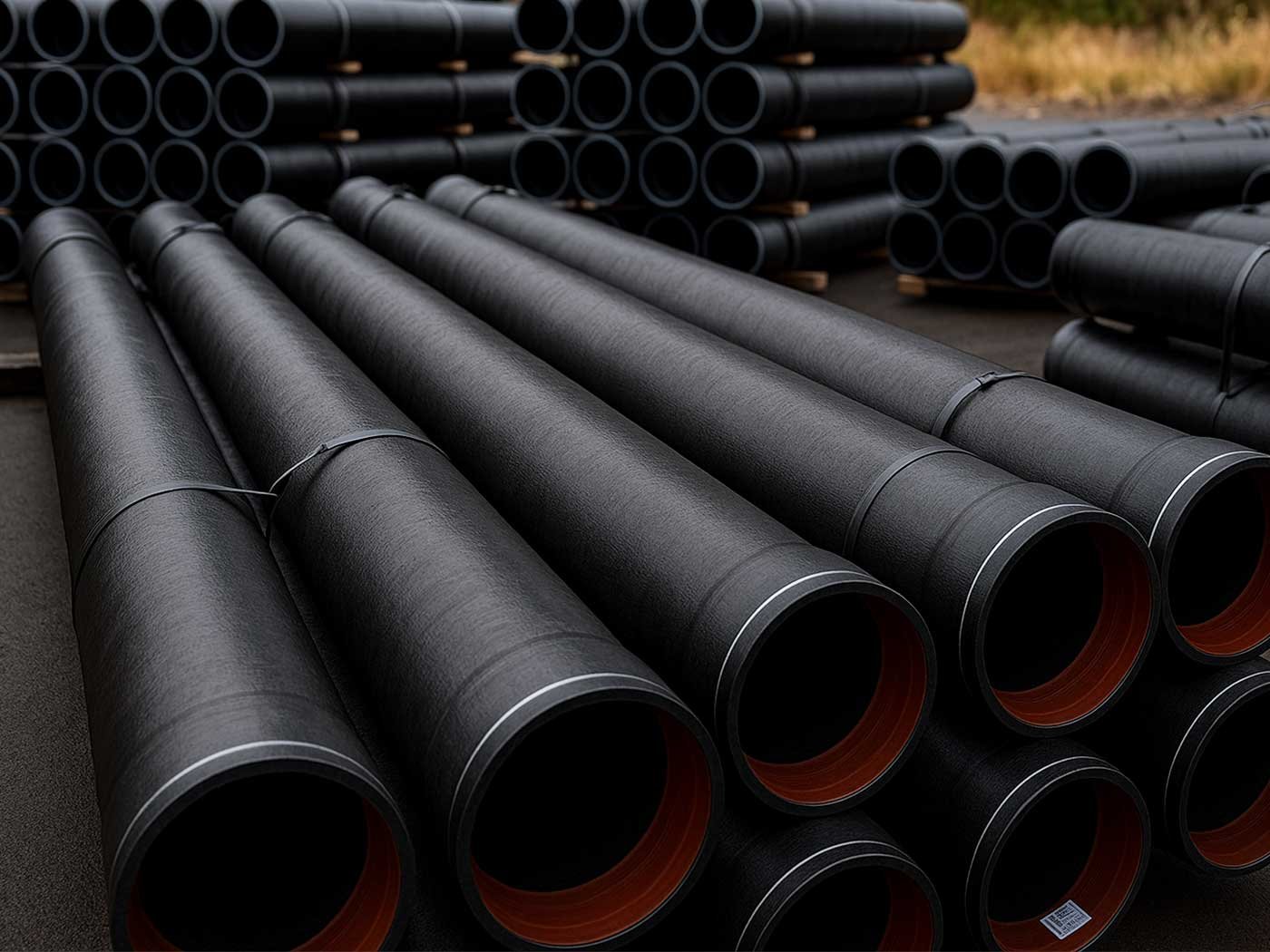
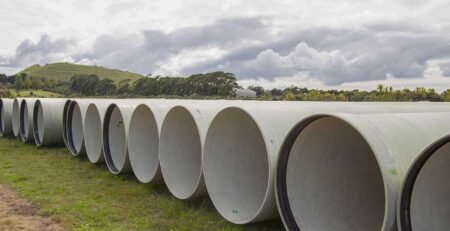
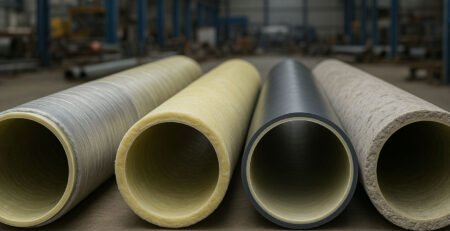
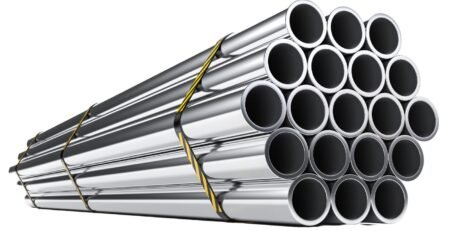

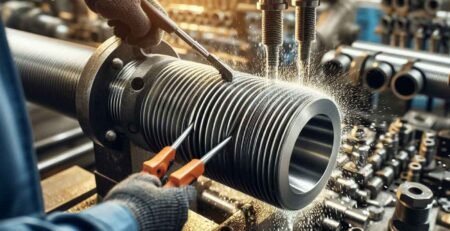
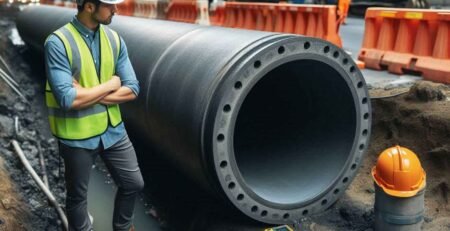

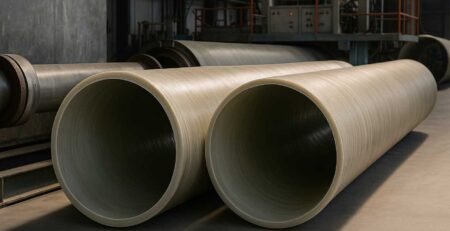
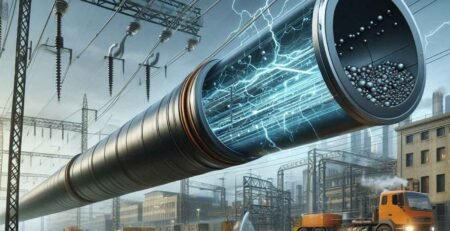
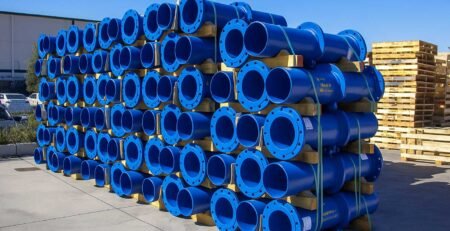
Leave a Reply